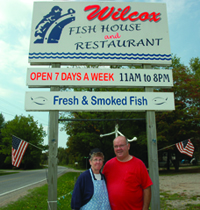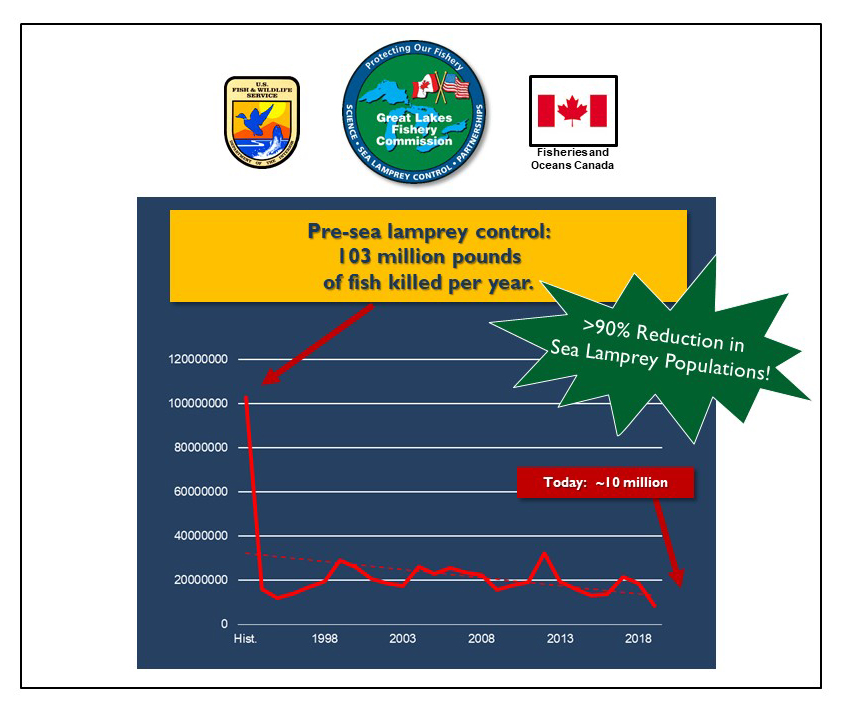Sea Lamprey: What Is At Risk?
 Fish species of the Great Lakes have not co-evolved with sea lamprey and therefore are not able to tolerate a parasite of this size. Consequently, most fish attacked by a sea lamprey die and remarkably, a single sea lamprey can kill up to 21 kg of fish during its parasitic juvenile stage. Before sea lamprey control, sea lamprey predation on valuable fish stocks was so high it became a key factor in the collapse of the Great Lakes ecosystem and economy that it supported; tens of thousands of jobs were lost, property values were diminished, and a way of life was forever changed for millions of people. Sea lampreys killed more than 100 million pounds of Great Lakes fish annually, which was five times the commercial harvest in the upper Great Lakes.
Fish species of the Great Lakes have not co-evolved with sea lamprey and therefore are not able to tolerate a parasite of this size. Consequently, most fish attacked by a sea lamprey die and remarkably, a single sea lamprey can kill up to 21 kg of fish during its parasitic juvenile stage. Before sea lamprey control, sea lamprey predation on valuable fish stocks was so high it became a key factor in the collapse of the Great Lakes ecosystem and economy that it supported; tens of thousands of jobs were lost, property values were diminished, and a way of life was forever changed for millions of people. Sea lampreys killed more than 100 million pounds of Great Lakes fish annually, which was five times the commercial harvest in the upper Great Lakes.
Successful sea lamprey control has allowed for the rehabilitation of a healthy Great Lakes ecosystem and economy now valued at more than $5.1 billion annually. These strides have only been possible through the annual application of the sea lamprey control program, which has reduced sea lamprey populations by more than 90% from the pre-control abundance—a remarkable success! Thanks to the program, sea lampreys kill less than 10 million pounds of Great Lakes fish annually, a fraction of the pre-control loss. If sea lamprey control is relaxed, the population quickly rebounds, host fish populations decline, and the economy suffers. Continued sea lamprey control is critical to maintaining and preserving a healthy Great Lakes ecosystem and economy.


